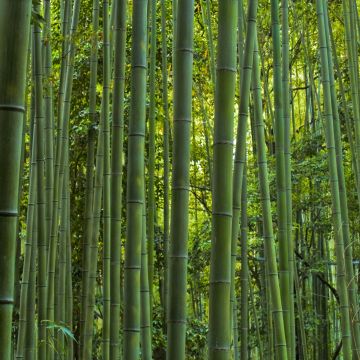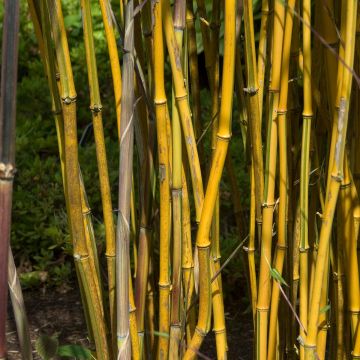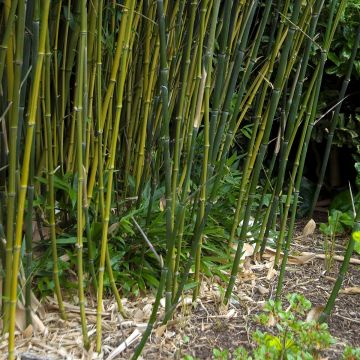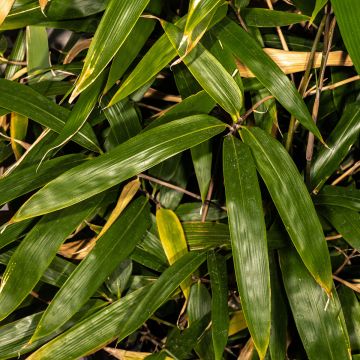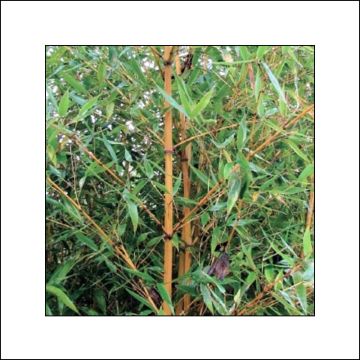

Chusquea couleou - Bambou des Incas


Chusquea couleou - Bambou des Incas
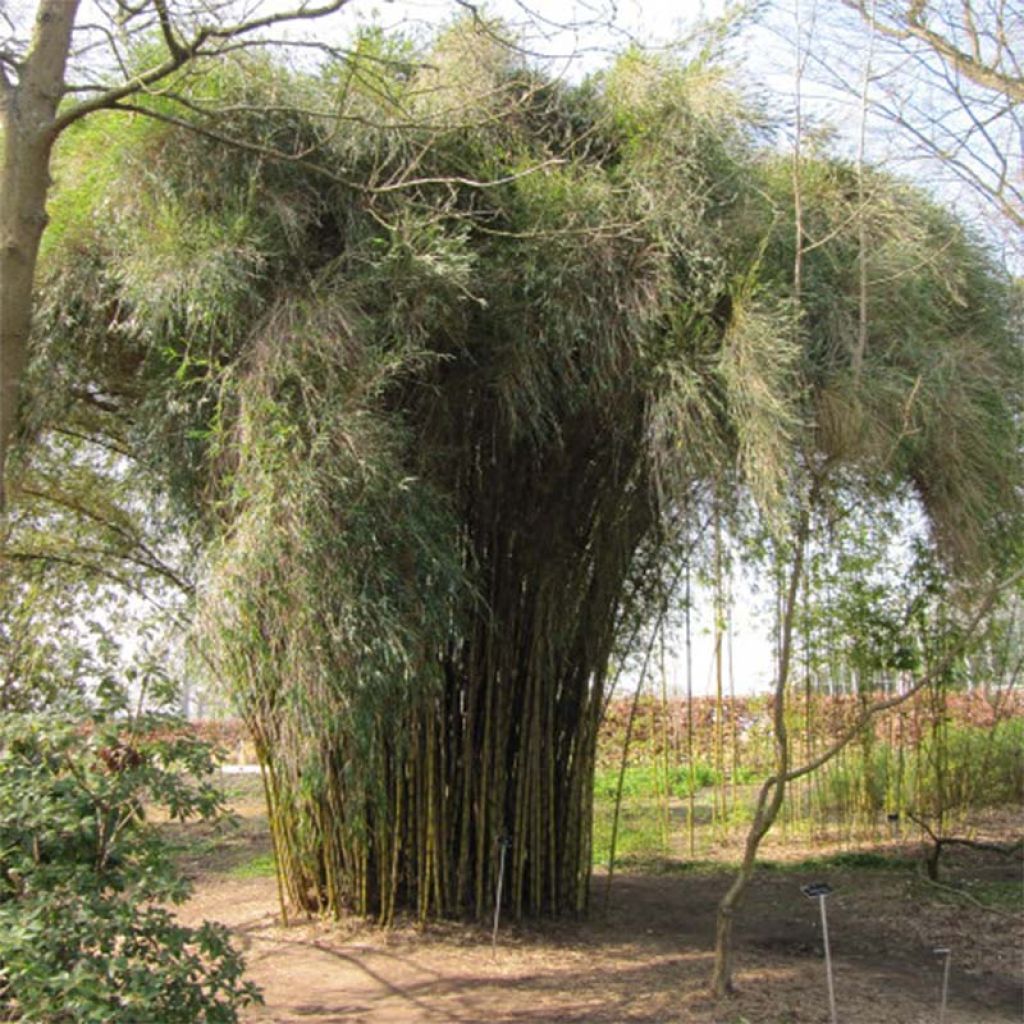

Chusquea couleou - Bambou des Incas
Chusquea culeou
Chusquea culeou
Chilean Bamboo, Inca Bamboo
Special offer!
Receive a €20 voucher for any order over €90 (excluding delivery costs, credit notes, and plastic-free options)!
1- Add your favorite plants to your cart.
2- Once you have reached €90, confirm your order (you can even choose the delivery date!).
3- As soon as your order is shipped, you will receive an email containing your voucher code, valid for 3 months (90 days).
Your voucher is unique and can only be used once, for any order with a minimum value of €20, excluding delivery costs.
Can be combined with other current offers, non-divisible and non-refundable.
Why not try an alternative variety in stock?
View all →This plant carries a 24 months recovery warranty
More information
We guarantee the quality of our plants for a full growing cycle, and will replace at our expense any plant that fails to recover under normal climatic and planting conditions.
Would this plant suit my garden?
Set up your Plantfit profile →
Description
The Chusquea culeou, or the Inca Bamboo, also known as the Chilean Bamboo, is rare in cultivation, which will delight plant collectors. Its unique appearance, with its curiously staggered growth, sets it apart from all others. This unusual architecture is due to the arrangement of its evergreen foliage. The leaves are tightly clustered at the nodes, along the entire height of its culms. It is a plant species that prefers moist soils and humid environments, thriving particularly well in coastal climates. Its moderate growth and compact habit make it perfect for small gardens, whether planted in a the ground or in containers on a terrace or balcony.
The Chusquea couleou (syn. Chusquea culeou) is a plant belonging to the family Poaceae, a type of grass with woody stems that grows from a rhizomatous stump, forming dense clumps. This botanical species is native to the wet areas of temperate forests in southern Chile and southeastern Argentina. Not as hardy as Fargesia or Phyllostachys, it is still considered a bamboo suitable for temperate climates, and its base is capable of withstanding short periods of frost down to around -15°C (5 °F). It is easy to grow in any moist to wet soil (slightly acidic, neutral or slightly alkaline), although it is relatively uncommon in cultivation.
This bamboo produces solid, tightly packed culms that do not arch much. They have a diameter of 2 to 3 cm (0.8 to 1.2 in) and grow in the spring, reaching a height of 3 to 4 m (9 ft 10 in to 13 ft 1 in), depending on the cultivation method: a potted plant will grow less than one planted in the ground. When young, the culms are blackish, but they turn green, passing through various shades of yellow and reddish-brown. The plant has a very distinctive habit: upright, tiered, slightly flaring at the top, with a dense bushy appearance formed by short branches that emerge from each node very close to the culm. Its evergreen foliage becomes partially deciduous below -10°C (14 °F). The leaves are long and slender, slightly fuzzy, and have a small spine at their tips. They have a beautiful medium green colour with a satin-like finish.
This bamboo creates scenes of great poetry, whether planted in the ground or in containers, especially near water features that provide a humid atmosphere. It is perfect for Zen, exotic, or contemporary gardens. Avoid planting it in direct scorching sunlight, dry soil, or windy locations. Showcase it along a path or in the centre of a flower bed. It integrates easily into the garden, pairing well with trees such as caramel tree, Japanese maple in all its forms, or dwarf conifers. In a more shrubby setting, it can be accompanied by sacred bamboo, spindle tree, or Loropetalum. It can also be combined with giant perennial plants such as Hosta Empress Wu, Gunnera manicata, Aralia, or Papyrus for a striking tropical scene. With its extremely exotic appearance, Chusquea culeou is the ideal bamboo to bring a truly exotic style to your terrace or balcony!
Report an error about the product description
Chusquea culeou in pictures


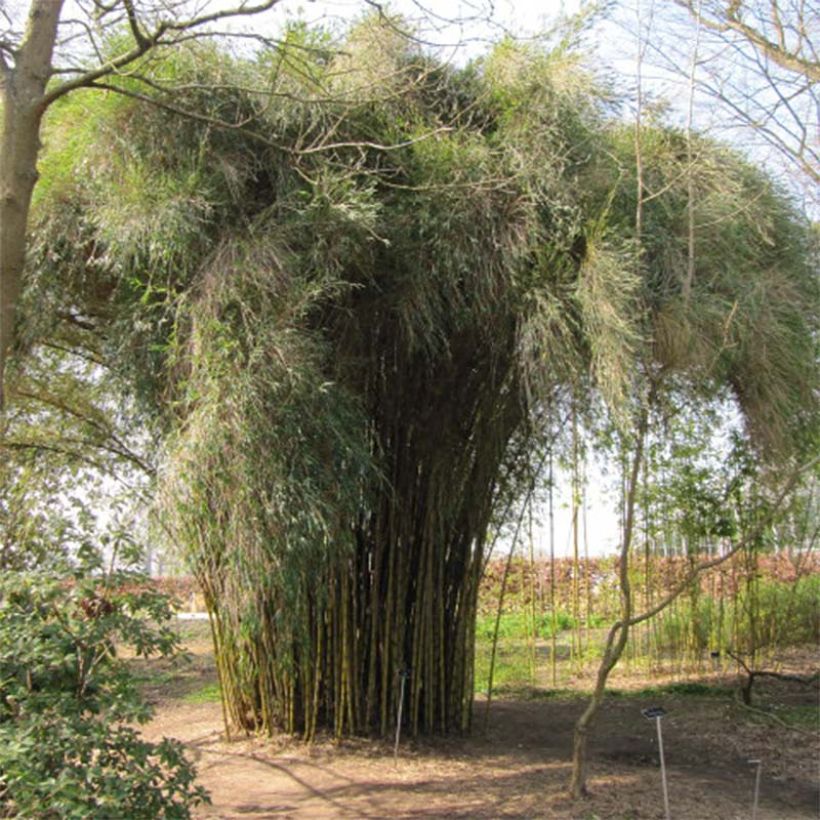

Plant habit
Foliage
Botanical data
Chusquea
culeou
Gramineae
Chilean Bamboo, Inca Bamboo
South America
Other Bamboos A to Z
View all →Planting and care
Cultivated in containers, bamboo can be planted at any time of the year, except during frost. However, the best planting period is late summer and autumn, when the soil is warm and rainfall is more frequent. The planting distance depends on how you plan to use your bamboos: for mass planting, allow a spacing of 1.8 to 2.2 metres (5 feet 11 inches to 7 feet 2 inches) between each plant. For a hedge, this distance is reduced to 1 to 1.4 metres (3 feet 4 inches to 4 feet 7 inches).
In general, bamboos prefer rich, deep, well-drained soil that remains moist, acidic or neutral. They can tolerate slightly alkaline soil depending on the variety. Chusquea couleou is a plant that prefers ordinary but moist soil and a humid atmosphere, and it is sensitive to hot exposures. Plant it in partial shade, or in full sun if its roots are in very moist soil. Its spreading habit is not very pronounced.
During planting, don't hesitate to loosen the soil and thoroughly moisten the root ball by soaking it. Add well-decomposed compost and lightly dig it into the surface. Watering should be done regularly, especially during the first year when planted in the ground, and constantly if your bamboos are grown in pots. The establishment period can sometimes seem a bit long, but don't panic!
For bamboo with spreading rhizomes, the installation of a rhizome barrier (thick and resistant polypropylene film) is essential, as these varieties do not care about property limits and can quickly take over large areas. The rhizome barrier should be buried vertically, leaving a height of 10 cm (3.9 in) above ground, and inclined at a 15 degree (59 °F) angle towards the plant.
As for maintenance, bamboo is not demanding: remember to weed around the base, at least in the beginning, until its dead leaves form a natural mulch on the ground. An application of nitrogen-rich fertiliser (well-rotted manure or liquid fertiliser) in spring and autumn can be beneficial.
Planting period
Intended location
Care
This item has not been reviewed yet - be the first to leave a review about it.
Similar products
Haven't found what you were looking for?
Hardiness is the lowest winter temperature a plant can endure without suffering serious damage or even dying. However, hardiness is affected by location (a sheltered area, such as a patio), protection (winter cover) and soil type (hardiness is improved by well-drained soil).

Photo Sharing Terms & Conditions
In order to encourage gardeners to interact and share their experiences, Promesse de fleurs offers various media enabling content to be uploaded onto its Site - in particular via the ‘Photo sharing’ module.
The User agrees to refrain from:
- Posting any content that is illegal, prejudicial, insulting, racist, inciteful to hatred, revisionist, contrary to public decency, that infringes on privacy or on the privacy rights of third parties, in particular the publicity rights of persons and goods, intellectual property rights, or the right to privacy.
- Submitting content on behalf of a third party;
- Impersonate the identity of a third party and/or publish any personal information about a third party;
In general, the User undertakes to refrain from any unethical behaviour.
All Content (in particular text, comments, files, images, photos, videos, creative works, etc.), which may be subject to property or intellectual property rights, image or other private rights, shall remain the property of the User, subject to the limited rights granted by the terms of the licence granted by Promesse de fleurs as stated below. Users are at liberty to publish or not to publish such Content on the Site, notably via the ‘Photo Sharing’ facility, and accept that this Content shall be made public and freely accessible, notably on the Internet.
Users further acknowledge, undertake to have ,and guarantee that they hold all necessary rights and permissions to publish such material on the Site, in particular with regard to the legislation in force pertaining to any privacy, property, intellectual property, image, or contractual rights, or rights of any other nature. By publishing such Content on the Site, Users acknowledge accepting full liability as publishers of the Content within the meaning of the law, and grant Promesse de fleurs, free of charge, an inclusive, worldwide licence for the said Content for the entire duration of its publication, including all reproduction, representation, up/downloading, displaying, performing, transmission, and storage rights.
Users also grant permission for their name to be linked to the Content and accept that this link may not always be made available.
By engaging in posting material, Users consent to their Content becoming automatically accessible on the Internet, in particular on other sites and/or blogs and/or web pages of the Promesse de fleurs site, including in particular social pages and the Promesse de fleurs catalogue.
Users may secure the removal of entrusted content free of charge by issuing a simple request via our contact form.
The flowering period indicated on our website applies to countries and regions located in USDA zone 8 (France, the United Kingdom, Ireland, the Netherlands, etc.)
It will vary according to where you live:
- In zones 9 to 10 (Italy, Spain, Greece, etc.), flowering will occur about 2 to 4 weeks earlier.
- In zones 6 to 7 (Germany, Poland, Slovenia, and lower mountainous regions), flowering will be delayed by 2 to 3 weeks.
- In zone 5 (Central Europe, Scandinavia), blooming will be delayed by 3 to 5 weeks.
In temperate climates, pruning of spring-flowering shrubs (forsythia, spireas, etc.) should be done just after flowering.
Pruning of summer-flowering shrubs (Indian Lilac, Perovskia, etc.) can be done in winter or spring.
In cold regions as well as with frost-sensitive plants, avoid pruning too early when severe frosts may still occur.
The planting period indicated on our website applies to countries and regions located in USDA zone 8 (France, United Kingdom, Ireland, Netherlands).
It will vary according to where you live:
- In Mediterranean zones (Marseille, Madrid, Milan, etc.), autumn and winter are the best planting periods.
- In continental zones (Strasbourg, Munich, Vienna, etc.), delay planting by 2 to 3 weeks in spring and bring it forward by 2 to 4 weeks in autumn.
- In mountainous regions (the Alps, Pyrenees, Carpathians, etc.), it is best to plant in late spring (May-June) or late summer (August-September).
The harvesting period indicated on our website applies to countries and regions in USDA zone 8 (France, England, Ireland, the Netherlands).
In colder areas (Scandinavia, Poland, Austria...) fruit and vegetable harvests are likely to be delayed by 3-4 weeks.
In warmer areas (Italy, Spain, Greece, etc.), harvesting will probably take place earlier, depending on weather conditions.
The sowing periods indicated on our website apply to countries and regions within USDA Zone 8 (France, UK, Ireland, Netherlands).
In colder areas (Scandinavia, Poland, Austria...), delay any outdoor sowing by 3-4 weeks, or sow under glass.
In warmer climes (Italy, Spain, Greece, etc.), bring outdoor sowing forward by a few weeks.


































